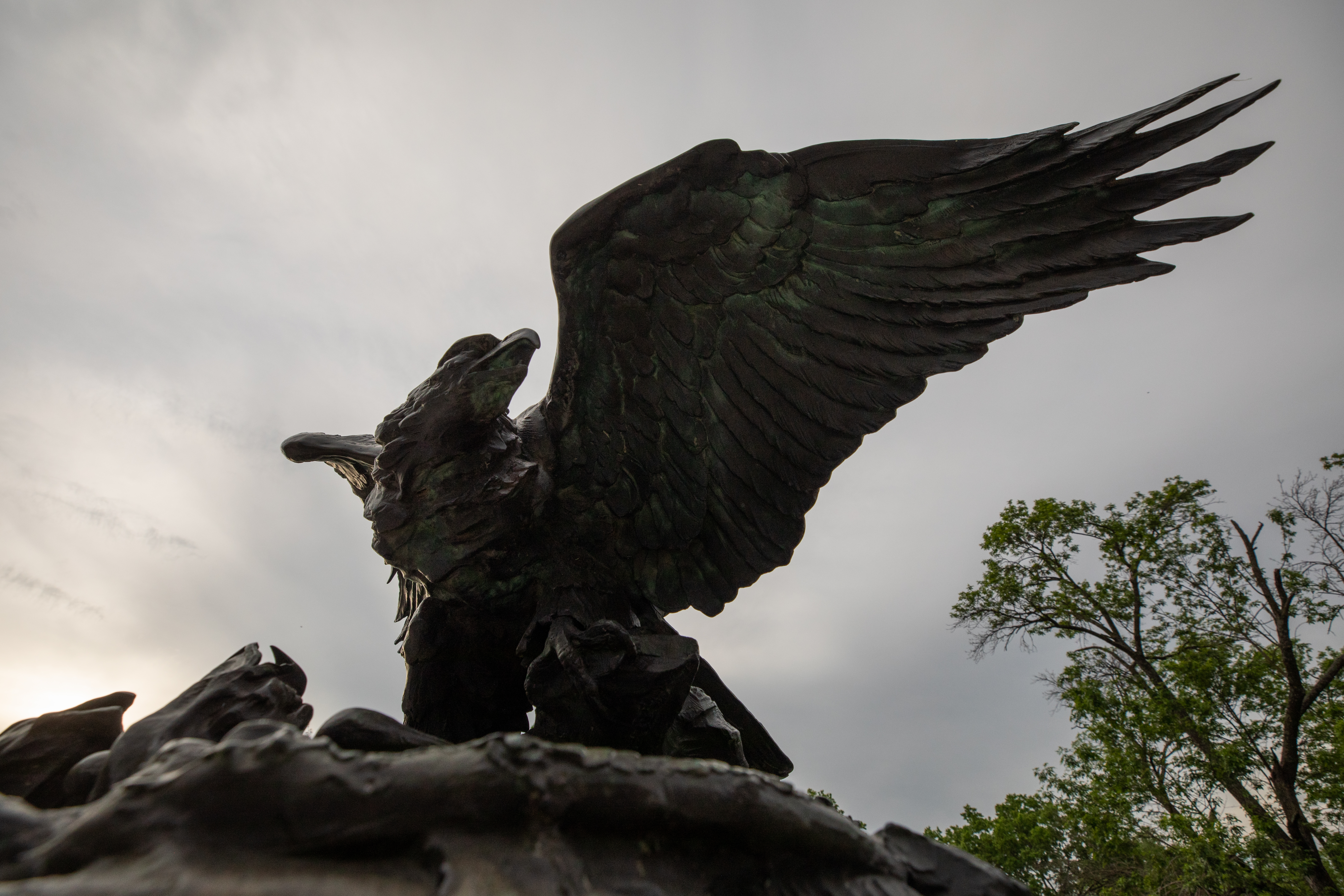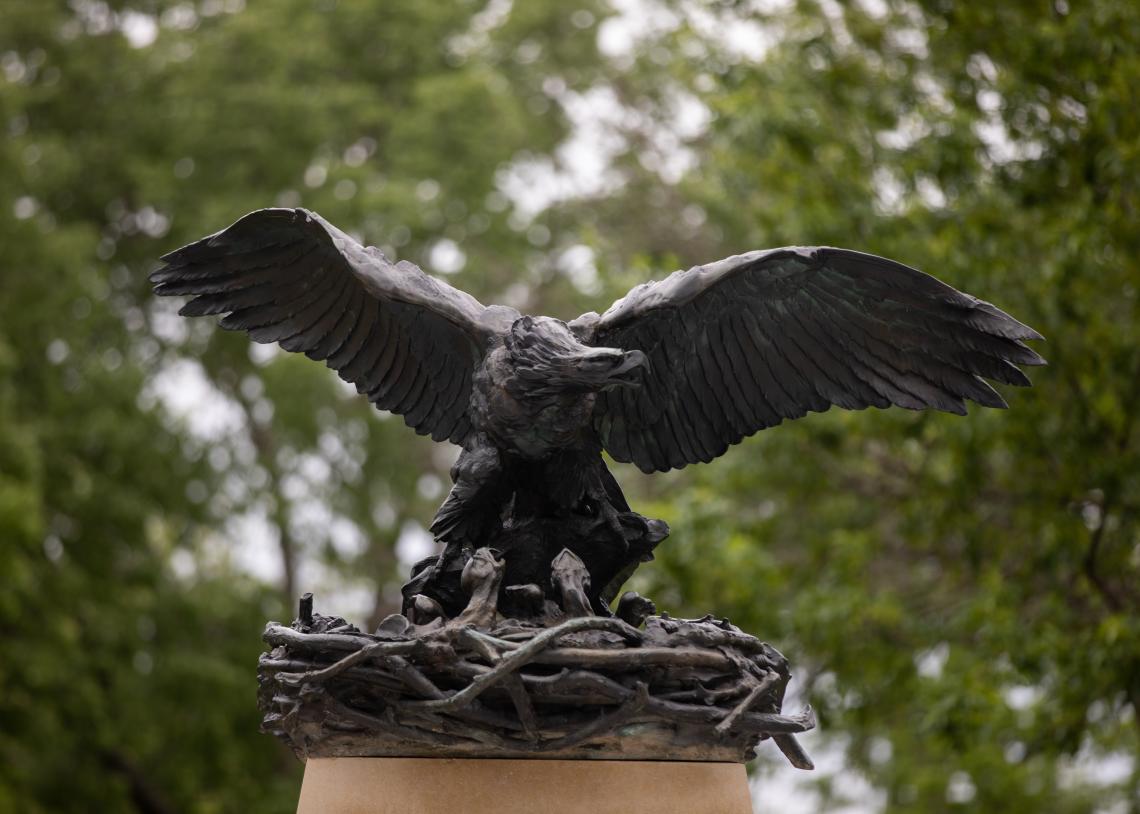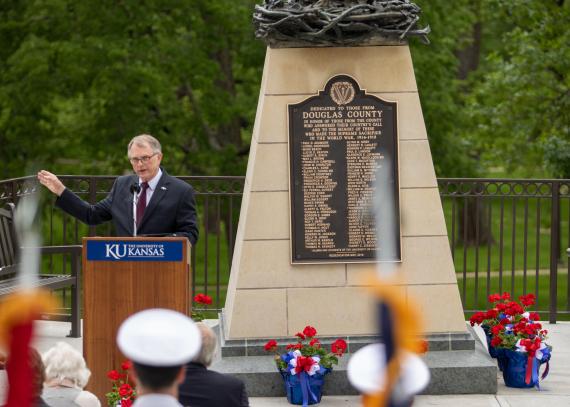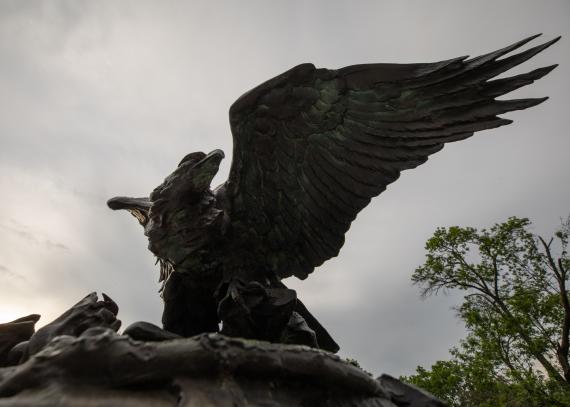The Victory Eagle



To honor World War I casualties, the Victory Highway Association began a campaign in 1921 to set a statue of a female bald eagle defending her eaglets at every county line along U.S. 40, then a transcontinental highway. The Douglas County statue, said to be the second in the country, was paid for by donations from local women’s clubs; its base was set on land donated by H.G. Van Neste north of the intersection of U.S. 40 and Kansas 32 at the Douglas-Leavenworth county line and dedicated May 27, 1929.
In 1980 the statue was vandalized and knocked off its pedestal; Tom Swearingen, director of exhibits for the Natural History Museum, requested the statue for the museum, and it was rededicated there in 1982. Similar monuments are in Gage Park in Topeka and the city park of Wamego, Kan.
The bronze statue is 4 feet tall and has a wingspan of 7 feet 6 inches; it rests on a limestone pedestal 9 feet tall. It was cast in 1920 after consultation with ornithologists Thomas F. Roberts of the University of Minnesota and Otto Widman of St. Louis.
In 2017 it was designated one of 100 national World War I Centennial Memorials by a program sponsored by the World War One Centennial Commission and the Pritzker Military Museum and Library in partnership with the American Legion and Veterans of Foreign Wars.
In May 2019, the statue was moved and rededicated at its new location at the east end of Memorial Drive, linking the Victory Eagle with the university’s other war memorials, including David Booth Kansas Memorial Stadium, the Kansas Memorial Union, the World War II Memorial Carillon and Campanile, the Vietnam War Memorial, and the Korean War Memorial.

